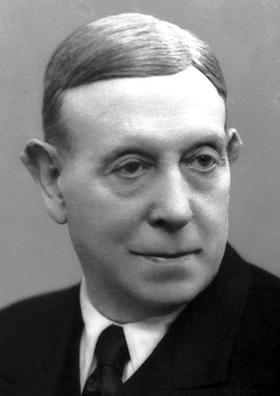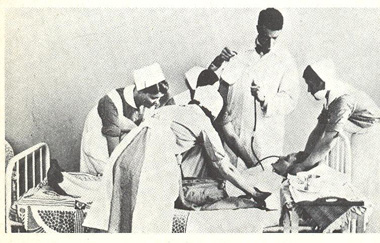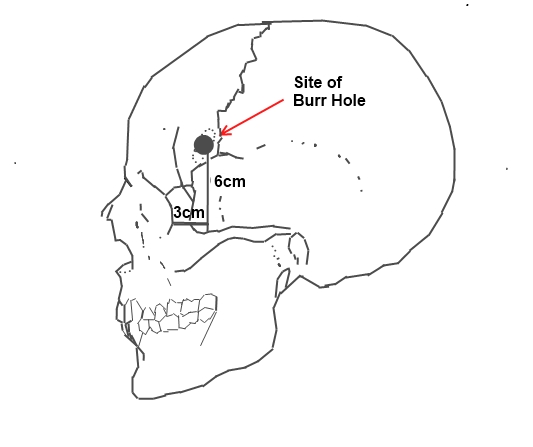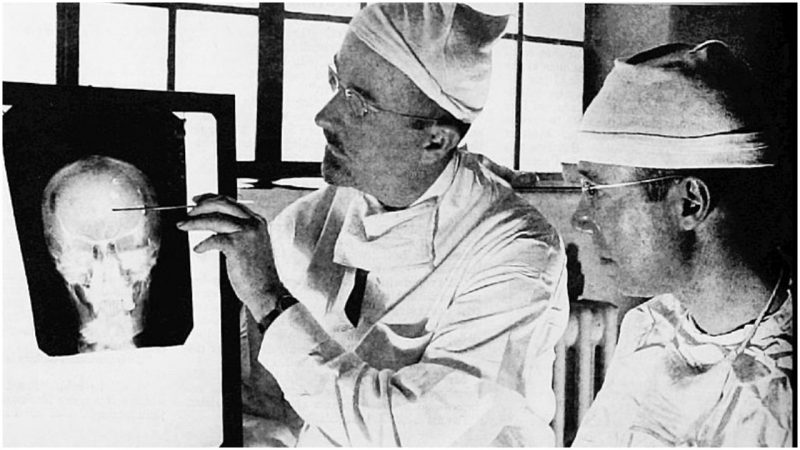Apart from being regarded as a classic novel and film, One Flew Over the Cuckoo’s Nest is perhaps the best-known depiction of lobotomy in mainstream culture. In the movie, McMurphy (played by Jack Nicholson), who fakes insanity to avoid being imprisoned, undergoes a frontal lobotomy that leaves him in a vegetative state–expressionless and unemotional. “There’s nothin’ in the face. Just like one of those store dummies,” another patient, Chief, remarks.
For many in the movie audiences, it was this scene from the novel and then the movie that brought the infamous neurosurgical procedure to their attention. However, at the time when Ken Kesey wrote the novel, the procedure was already used widely throughout the United States in the treatment of people who suffered from various mental illnesses. Tragically, in many cases, the outcome was similar to what was portrayed in One Flew Over the Cuckoo’s Nest. People were left emotionless and inert.
Doctors, scientists, researchers, and other academics have long tried to find a cure for mental disorders, with some of them, including neurologist Walter Freeman, becoming obsessed with the idea. But instead of finding the cure, Freeman’s obsession would result in the invention of prefrontal lobotomy, which he personally introduced and popularized throughout the United States.
It was 1935 when Dr. Walter Freeman learned of a frontal lobe ablation technique thanks to an experiment performed by the American neuroscientist Carlyle Jacobsen, who tried frontal and prefrontal lobotomies on chimps and concluded that they became less aggressive and more manageable afterward.
The same year, Antonio Egas Moniz, a Portuguese neurosurgeon, devised a leucotome, an instrument for dividing the white matter in the brain and performed the first procedure known as prefrontal leukotomy.
In 1936 Freeman modified Moniz’s technique and together with his colleague James Watts performed the first lobotomy operation in the United States on a 63-year-old Kansas housewife suffering from anxiety, insomnia, and depression. He was convinced that the operation was successful and was satisfied with the results, so he started to propagandize the procedure, strongly recommending it for any type of disorders, from psychosis, depression or neurosis to criminality.

Trying to find a more efficient way to perform the procedure, he developed the “ice-pick lobotomy,” an operation that didn’t require drilling holes in the skull. Instead, he inserted an ice-pick-like instrument above each eye of the patient by tapping it with a hammer.

Many of his colleagues criticized his method, but Freeman was convinced that it was a success and recommended the procedure. Between 1939 and 1951, almost 20,000 lobotomies were performed in the United States and, as Freeman claimed, the operation reduced governmental costs from $35,000 per year for keeping a patient in an asylum to $250 for lobotomizing him or her.
He popularized the procedure and started traveling around the country in a van he called “the lobotomobile,” performing dozens of ice-pick lobotomies each day. He was able to do a lobotomy in 12 minutes and it is said that he once performed 25 lobotomies in one day. Known as a great showman, he often used carpenter’s hammers and also liked to insert picks in both eyes simultaneously.

Allegedly around 50,000 people underwent the procedure in the United States alone. At some point, lobotomy became so popular throughout the country that many Americans volunteered to undergo the procedure for the second time.
However, lobotomy’s popularity faded, mostly due to the development of anti-psychotic medications. Freeman performing his last lobotomy in 1967 when a patient, Helen Mortensen, died on the operating table. After this incident, he was banned from operating.
In the last 20 years of his life, however, he continued to tour the country in his “lobotomobile,” visiting former patients and documenting their histories.
